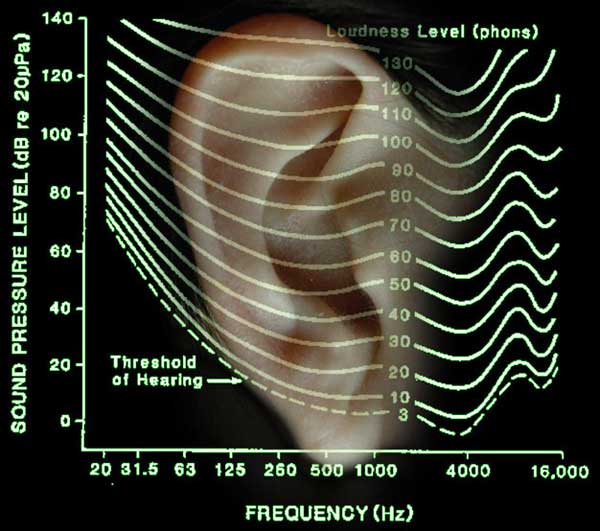


Low and high-pitched sounds appear less loud to the human ear Source: GreenFacts Related publication:
Other Figures & Tables on this publication: Figure 1*: Normal equal-loudness-level contours for pure tones under free-field listening conditions Figure 2: The prevalence of hearing impairment Figure 6: Cumulative numbers of MP3 players and all portable audio equipment in the EU Figure 7: Percentage of each portable audio device sold in 2004-2007 Table 4: World Health Organisation Grades of Hearing Impairement (WHO, 2008) Low and high-pitched sounds appear less loud to the human ear |